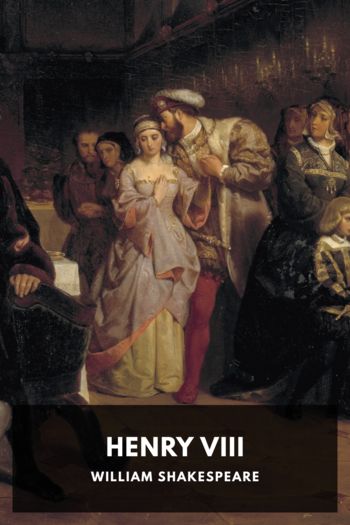Don Quixote by Miguel de Cervantes Saavedra (electric book reader TXT) 📕

Description
Don Quixote is a novel that doesn’t need much introduction. Not only is it widely considered the greatest Spanish literary work of all time, one of the greatest literary works in history, and a cornerstone of the Western literary canon, it’s also considered one of the first—if not the first—modern novels.
This Standard Ebooks edition is believed to be the first ebook edition of Don Quixote to feature a full transcription of translator John Ormsby’s nearly 1,000 footnotes. Ormsby as an annotator deftly explains obscure passages, gives background on the life and times of 1600s Spain, references decisions from other contemporary translators, and doesn’t hold back from sharing his views on the genius—and flaws—of Cervantes’ greatest work.
The story is of the eponymous Don Quixote, a country noble who, in his old age, reads too many chivalric romances and goes mad. After convincing his grubby servant, Sancho Panza, to join him as his squire, he embarks on an absurd and comic quest to do good and right wrongs.
Today Don Quixote’s two volumes are published as a single work, but their publication came ten years apart. Cervantes saw great success with the publication of his first volume, and appeared to have little desire to write a second volume until a different author wrote a spurious, inferior sequel. This kicked Cervantes into gear and he wrote volume two, a more serious and philosophical volume than the largely comic first volume.
Despite being written in 1605 and translated in 1885, Don Quixote contains a surprising amount of slapstick laughs—even for the modern reader—and narrative devices still seen in today’s fiction, including meta-narratives, frame narratives, and metafiction. Many scenes (like Quixote’s attack on the windmills) and characters (like Sancho Panza and Lothario) are so famous that they’re ingrained in our collective culture.
Read free book «Don Quixote by Miguel de Cervantes Saavedra (electric book reader TXT) 📕» - read online or download for free at americanlibrarybooks.com
- Author: Miguel de Cervantes Saavedra
Read book online «Don Quixote by Miguel de Cervantes Saavedra (electric book reader TXT) 📕». Author - Miguel de Cervantes Saavedra
The first passage quoted is from the Chronicle of Don Florisel de Niqaea, by Feliciano de Silva, the volumes of which appeared in 1532, 1536, and 1551, and from the tenth and eleventh books of the Amadís series. The second is from Olivante de Laura, by Torquemada (1564). Clemencín points out that the first passage had been previously picked out as a sample of the absurdity of the school, by Diego Hurtado de Mendoza. ↩
The History of Don Belianis de Grecia, by the Licentiate Jerónimo Fernández, 1547. It has been by some included in the Amadís series, but it is in reality an independent romance. ↩
Sigüenza was one of the Universidades menores, the degrees of which were often laughed at by the Spanish humorists. ↩
The Spanish tradition of the battle of Roncesvalles is, of course, at variance with the Chanson de Roland, but it is somewhat nearer historical truth, inasmuch as the slaughter of Roland and the rearguard of Charlemagne’s army was effected not by Saracens, but by the Basque mountaineers. ↩
Ganelon, the arch-traitor of the Charlemagne legend. In Spanish he appears as Galalon, in Italian as Gano; but in this as in the cases of Roland, Baldwin, and others, I have thought it best to give the name in the form in which it is best known, and will be most readily recognized, instead of Roldan, Valdovinos, etc. ↩
Like Reinaldos or Rinaldo, who came to be Emperor of Trebizond. ↩
That is, a simple headpiece without either visor or beaver. ↩
An untranslatable pun on the word quarto, which means a sand-crack in a horse’s hoof, as well as the coin equal to one-eighth of the real. Gonela, or Gonnella, was a jester in the service of Borso, Duke of Ferrara (1450–1470). A book of the jests attributed to him was printed in 1568, the year before Cervantes went to Italy. ↩
Rocín is a horse employed in labor, as distinguished from one kept for pleasure, the chase, or personal use generally; the word therefore may fairly be translated “hack.” Ante is an old form of Antes—“before,” whether in time or in order. ↩
Quixote—or, as it is now written, Quijote—means the piece of armor that protects the thigh (cuissan, cuish). Smollett’s Sir Lancelot Greaves is a kind of parody on the name. Quixada and Quesada were both distinguished family names. The Governor of the Goletta, who was one of the passengers on board the unfortunate Sol galley, was a Quesada; and the faithful majordomo of Charles V and guardian of Don John of Austria was a Qixada. ↩
Properly “blank” armour, but Don Quixote takes the word in its common sense of white. ↩
Flamante. Shelton translates “burnished,” and Jervas “flaming,” but the secondary meaning of the word is “new,” “fresh,” “unused.” ↩
The Campo de Montiel was “famous” as being the scene of the battle, in 1369, in which Pedro the Cruel was defeated by his brother Henry of Trastamara supported by Du Gueselin. The actual battlefield, however, lies some considerable distance to the south of Argamasilla, on the slope of the Sierra Morena, near the castle of Montiel in which Pedro took refuge. ↩
In the later romances of chivalry, a sage or a magician or some such personage was frequently introduced as the original source of the history. ↩
In Spain there are at least half a dozen varieties of inns each with its distinctive name. In Don Quixote the inn is almost always the venta, the solitary roadside inn where travellers of all sorts stop to bait; and it has remained to this day much what Cervantes has described. The particular venta that he had in his eye in this and the next chapter is said to be the Venta de Quesada, about 2½ leagues north of Manzanares, on the Madrid and Seville road. The house itself was burned down about a century ago, and has been rebuilt, but the yard at the back with its draw-well and stone trough are said to remain as they were in his day. ↩
The commentators are somewhat exercised by the contradiction here. If Don Quixote raised his visor and disclosed his visage, how was it that the girls were unable “to make out the features which the clumsy visor obscured”? Cervantes probably was thinking of the makeshift pasteboard visor (mala visera, as he calls it), which could not be put up completely, and so kept the face behind it in the shade. Hartzenbusch, however, believes the words to have been interpolated, and omits them.





Comments (0)